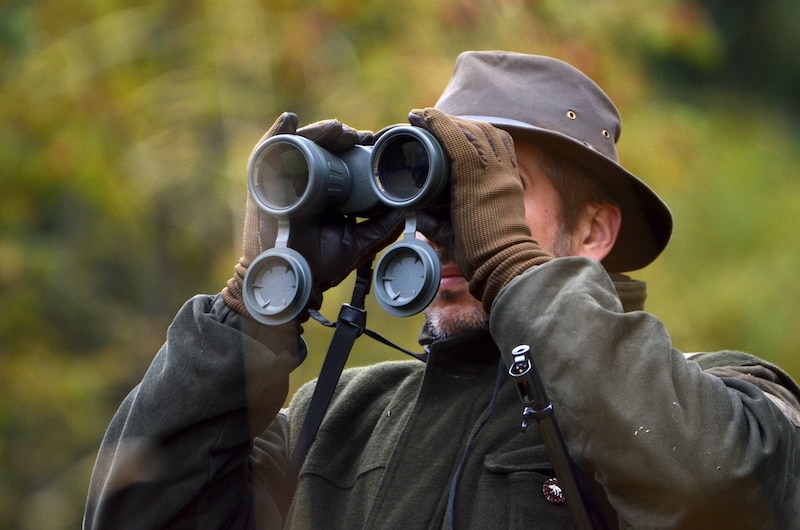Hunters often want to get close to nature and feel the thrill of the chase. But there’s a fun twist that can make the hunt more interesting: cooking adventures. Imagine being able to explore various shooting spots and experience the unique flavors of each game. Every landscape offers a unique taste, making hunting a gastronomic experience.
Explorers can discover exciting flavors in the forests. The lush greenery provides a diverse selection of plants for game animals to feed on. The deer and pigs may have a rich, earthy flavor because they eat nuts, berries, and roots. The meat can absorb the aromas of damp soil, moss, and leaves, enhancing its flavor.
In the vast open plains, animals like bison and antelope may wander across these landscapes. Imagine their lean and tender meat with the delicate flavor of the herbs and grasses they eat. Meanwhile, a mountain hunting lease brings a unique and distinct taste experience. Herbs and shrubs influence the meat’s distinct profiles, with hints of thyme, sage, and wildflowers.
Coastal hunting provides a soothing experience. Animals that eat grass near the ocean may taste slightly salty, enhancing their meat’s flavor. Seabirds, ducks, and other aquatic game have a distinct coastal flavor, as their meat absorbs the taste of marine life.
Here are some factors to consider when choosing the ideal hunting ground:
1. Ecological Balance
An ideal hunting ground boasts a diverse ecosystem with various plants and animals. This balance sustains prey and predator populations over time. For example, a forest might provide nuts, fruits, and weeds, which can attract deer.
When choosing a hunting ground, consider areas with multiple habitats, such as woodlands, grasslands, and wetlands, as they encourage a wide array of wildlife.
2. Game Population
The hunting ground’s game population should be abundant and sustainable. An abundance of game animals like deer, turkey, or waterfowl indicates a healthy ecosystem. However, an overcrowded population can lead to competition for resources and the spread of disease.
Research local wildlife management practices to understand how they maintain a balance. An example is the controlled hunting of deer to prevent overpopulation, which can result in habitat destruction.
3. Accessibility And Safety
Prioritize your safety by choosing a hunting ground that’s easily accessible and minimizes risks. Open areas with clear lines of sight reduce the chances of accidents. Steep hills, thick underbrush, or swampy terrain can hinder movement and make it challenging to retrieve the downed game.
Choose well-maintained trails or paths, allowing you to navigate safely. For instance, selecting a hunting ground with established trails can lead to natural clearings. Hence, it can be ideal, providing safe paths and potential ambush sites.
4. Legal Regulations
Adhere to local hunting laws to maintain ethical hunting practices and protect wildlife. Regulations often include designated hunting seasons, bag limits, and weapon specifications. Failing to comply can lead to fines or the loss of hunting privileges.
For example, research the specific dates for deer hunting season in your area and familiarize yourself with the allowed hunting methods, such as bows or firearms.

5. Habitat
Tailor your choice to the specific game species by selecting hunting grounds with suitable habitats. For instance, whitetail deer thrive in areas with a mix of forested sections for cover and open clearings for feeding.
On the other hand, waterfowl require wetlands with access to food and nesting sites. Understand the preferences of your target species and pick locations that provide the necessary resources.
6. Scouting And Observation
Prepare for your hunt by scouting the area before your hunting trip. Look for fresh tracks, droppings, and signs of feeding. Using binoculars or setting up trail cameras can give you a better understanding of animal movement patterns. For example, spotting a deer trail near a water source can help you predict where they might appear during your hunt.
7. Ethical Considerations
Ethical hunting involves treating animals and the environment with respect. Choose hunting grounds that aren’t habitats for endangered species or ecologically fragile areas. Practice fair chase, giving animals a reasonable chance to escape.
Only take shots if you’re confident they’ll result in a swift and humane kill. For example, if you encounter a rare bird species while hunting, avoid disturbing its habitat. Observe it from a distance instead.
8. Personal Skill And Experience
Tailor your choice to match your skill level. Beginners might benefit from hunting grounds with relatively easier terrain with abundant game. On the other hand, experienced hunters might seek more challenging environments. If you’re new to hunting, consider a hunting ground with clear sight and established trails for a more manageable experience.
9. Distance And Travel
Find a good balance between journey time and the quality of the hunt. A hunting ground that’s too far away could result in fatigue and limited hunting time. On the other hand, a nearby location might have increased hunting pressure. Plan your trip well in advance to minimize travel-related stress and maximize your time in the field.
Meanwhile, engage with local hunters, landowners, or outfitters to tap into their insights. They can provide valuable information about recent game sightings and preferred hunting methods. You can also ask them about weather conditions that could affect your hunt. Building relationships within the local hunting community can enhance your chances of success.
Conclusion
These key factors can help you make informed decisions when choosing a hunting ground that aligns with your goals, skill level, and ethical values. This approach can also enhance your hunting experience. Remember, ethical hunting practices can help you take care of natural resources responsibly.
Images Credit: Adobe Stock


